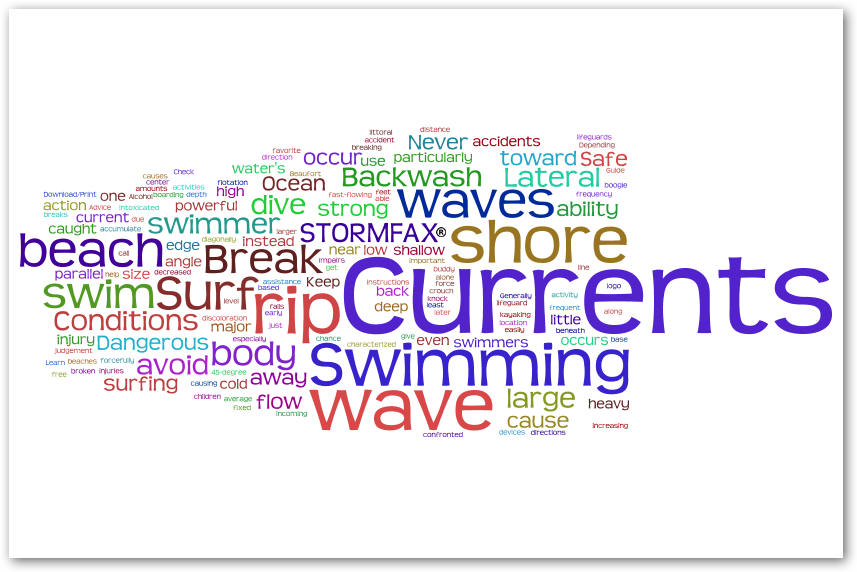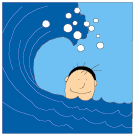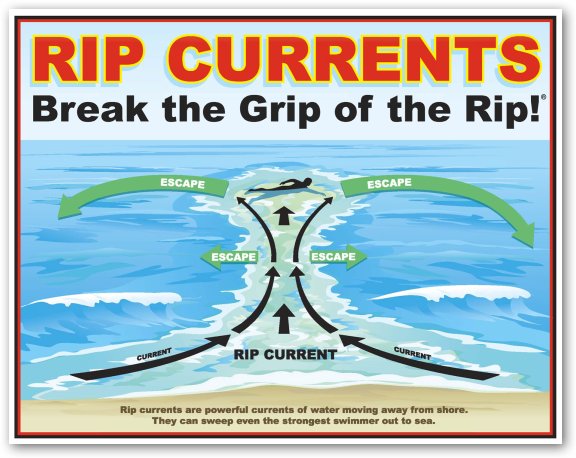






 Check with the lifeguard on surf conditions before swimming. If lifeguards give you directions or instructions from the stand, obey them.
Check with the lifeguard on surf conditions before swimming. If lifeguards give you directions or instructions from the stand, obey them.
 Never swim alone - use the buddy system.
Never swim alone - use the buddy system.
 Don't overestimate your swimming ability, especially early in the summer when the water is cold.
Don't overestimate your swimming ability, especially early in the summer when the water is cold.  Swimming ability is severely decreased in cold water.
Swimming ability is severely decreased in cold water.

 Judge your ability to participate in beach activities based on your swimming skills without the assistance of rafts and other flotation devices.
Judge your ability to participate in beach activities based on your swimming skills without the assistance of rafts and other flotation devices.
 Never dive into shallow water, or water of unknown depth.
Never dive into shallow water, or water of unknown depth.
 If you are confronted by a large wave and there is not enough time to get away from it, try to dive underneath the wave. Keep your body as low as possible until the wave passes over you. Timing is important, dive into the base of the wave just before it breaks. Do not dive if the water is too shallow - instead crouch and keep a low body profile.
If you are confronted by a large wave and there is not enough time to get away from it, try to dive underneath the wave. Keep your body as low as possible until the wave passes over you. Timing is important, dive into the base of the wave just before it breaks. Do not dive if the water is too shallow - instead crouch and keep a low body profile.
 If caught in rip currents, relax and swim toward the shore at a 45-degree angle until you are free of the current. If the rip currents are strong, swim parallel with the shoreline in the same direction as the littoral current and then swim diagonally toward the shore.
If caught in rip currents, relax and swim toward the shore at a 45-degree angle until you are free of the current. If the rip currents are strong, swim parallel with the shoreline in the same direction as the littoral current and then swim diagonally toward the shore.
If you are not able to swim out of the currents, call or wave for help.
 When body surfing, do not ride waves in a straight line toward shore. Instead, surf at an angle to the waves. Stay away from the white water in the wave center to avoid going "over the falls."
When body surfing, do not ride waves in a straight line toward shore. Instead, surf at an angle to the waves. Stay away from the white water in the wave center to avoid going "over the falls."
 Never swim while intoxicated. Alcohol impairs judgement, unnecessary risks are taken and a swimmer will tire more easily, increasing the chance of an accident.
Never swim while intoxicated. Alcohol impairs judgement, unnecessary risks are taken and a swimmer will tire more easily, increasing the chance of an accident.
 Learn and use the Beaufort Wind Scale.
Learn and use the Beaufort Wind Scale.
 Avoid a UV sunburn.
Avoid a UV sunburn.
![]() Cape Cod Shark Safety Guide
Cape Cod Shark Safety Guide

 Please read our Legal Notice and our Privacy Statement.
Please read our Legal Notice and our Privacy Statement.
